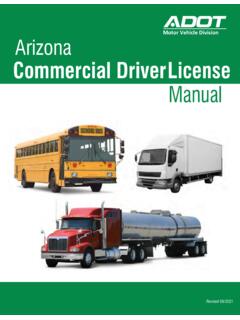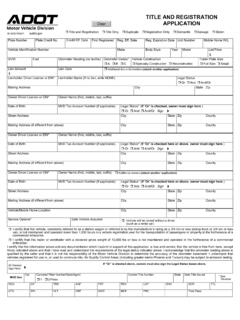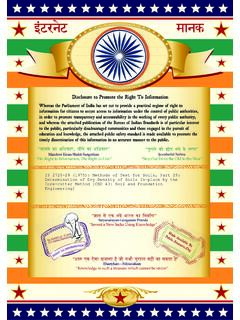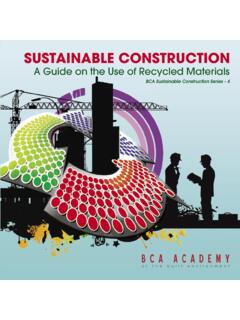Transcription of FIELD DENSITY BY THE SAND CONE METHOD
1 ARIZ 230a November 14, 2008 (9 Pages) FIELD DENSITY BY THE sand cone METHOD (A Modification of AASHTO Designation T 191) SCOPE 1.
2 (a) This METHOD is used to determine the DENSITY of compacted soils or aggregates by determining the weight and moisture content material removed from a test hole and measuring the volume of the test hole. (b) This test METHOD may involve hazardous material, operations, or equipment. This test METHOD does not purport to address all of the safety concerns associated with its use. It is the responsibility of the user to consult and establish appropriate safety and health practices and determine the applicability of any regulatory limitations prior to use.
3 (c) See Appendix A1 of the Materials Testing Manual for information regarding the procedure to be used for rounding numbers to the required degree of accuracy. APPARATUS 2. Apparatus for this test procedure shall consist of the following: (a) A balance or scale capable of measuring the maximum weight to be determined and conforming to the requirements of AASHTO M231, except the readability and sensitivity of any balance or scale utilized shall be at least lbs or at least the nearest gram.
4 (a) Miscellaneous digging tools. (b) sand cone apparatus consisting of base plate, cone and sand jar. (c) Standard sand . ( sand shall be kept dry and free flowing). (d) Containers with air tight covers (cylinder molds are satisfactory). (e) Oven, hot plate, stove or Speedy Moisture Tester. ARIZ 230a November 14, 2008 Page 2 NOTE: Calibration of the sand and sand cone apparatus shall be done in accordance with AZ 229. PREPARATION OF TEST SITE 3.
5 The surface of the area where the test is to be conducted shall be prepared as follows: (a) Clean away all loose soil and rock from an area of about 3 feet square at the spot where the test is to be made. In areas compacted by Sheep s foot rollers, it is necessary to get below the depth of the foot imprints. (b) The top of the material at the chosen location shall be prepared to a plane and level surface for an area slightly larger than the size of the base plate. The base plate shall then be placed on this level surface. PROCEDURE 4.
6 (a) A hole shall be dug approximately the diameter of the hole in the base plate and to the desired depth. (Usually 6 inches to 8 inches). While digging, especially using a hammer and chisel, care must be taken to avoid prying as this may deform the hole, disturb the surrounding material and give a false reading. All of the material removed from the hole shall be carefully recovered and put into a suitable container and covered with a lid or damp cloth, also making sure to get the hole as clean as possible.
7 This operation shall be done as quickly as possible to avoid any excessive drying of the sample. Suggested test hole volumes and corresponding moisture sample weights are given in Table 1. There will be occasions where the values listed in Table 1 will be difficult to arrive at or follow, such as in the case where we are limited to a shallow depth of compacted material. This table is offered as a guide and should be followed in most cases, however, deviations from theses values are allowable when conditions warrant.
8 The Speedy Moisture METHOD (AASHTO T-217) may be used to determine the moisture content. The Speedy METHOD will give the percent moisture on the passing the No. 4 material. If the sample contains material retained on the No. 4 sieve the Speedy results must be adjusted in accordance with the following formula to obtain the percent moisture of the total sample. ARIZ 230a November 14.
9 2008 Page 3 w(100 - R) + R W = 100 Where: W = % moisture in total sample w = % moisture in Pass No.
10 4 material R = % rock (Plus No. 4 sieve) An example of this formula is shown under Calculations in this procedure. Table 1 Maximum Particle Size Retained Minimum Test Hole Volume cu ft Minimum Moisture Content Sample grams No. 4 sieve 100 in. 250 1 in. 500 2 in. 1000 2-1/2 in. 1500 (b) Weigh the filled sand cone apparatus and place over the base plate with the cone down. A match mark on the cone of the apparatus and the base plate is required to ensure that the apparatus is placed on the base plate the same way every time.
















